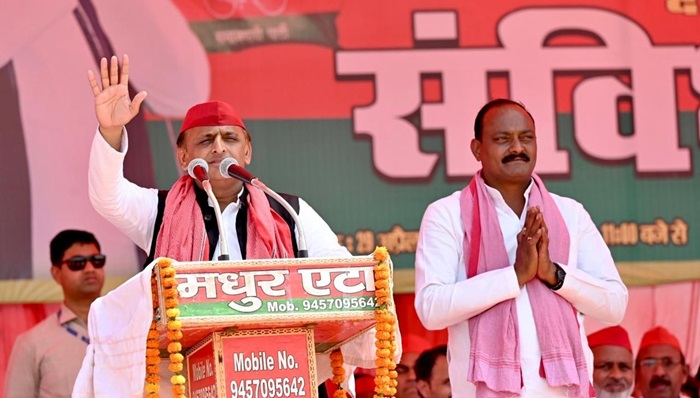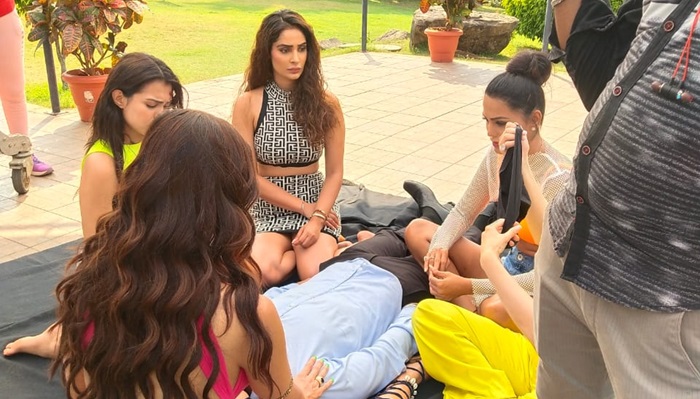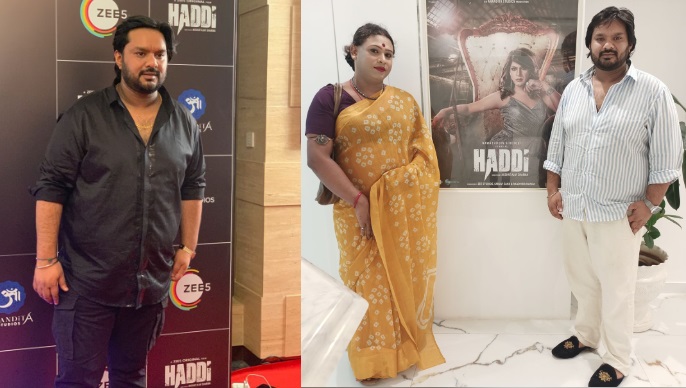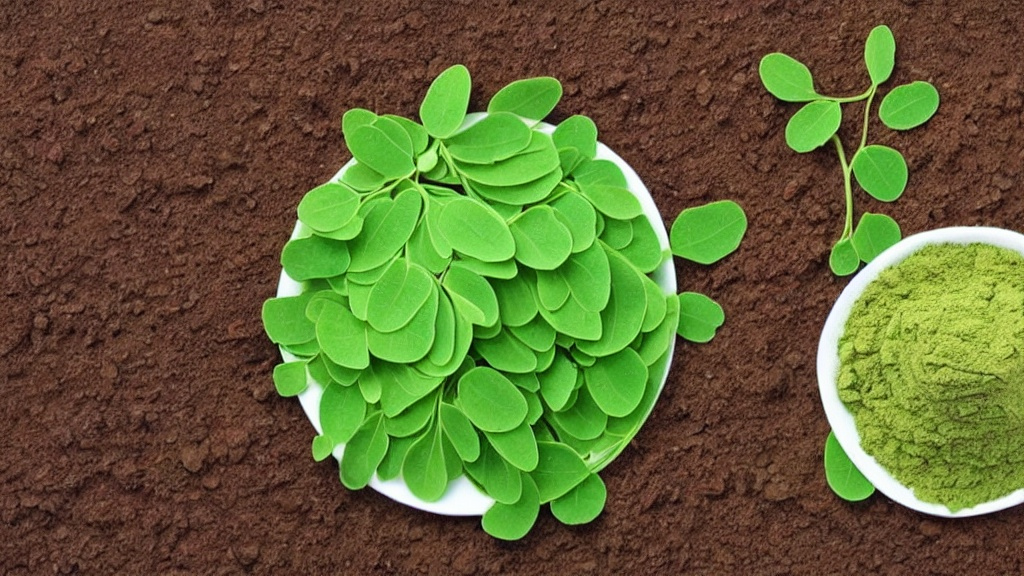Navaratri (Hindu festival) | Description, Importance, Goddess, & Facts | Celebrate Navratri with TVL News
- by: news desk
- 13 September, 2023
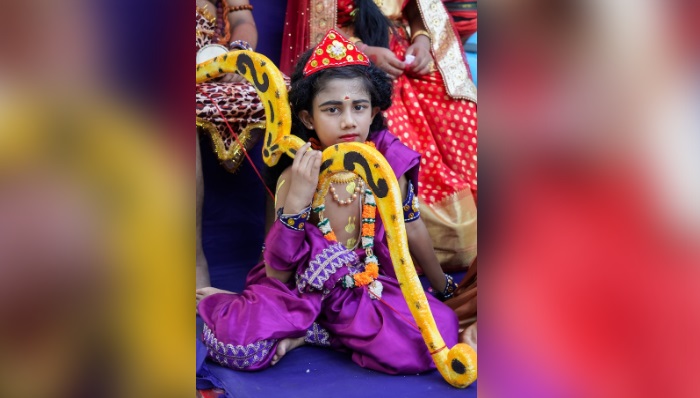
Introduction
Navratri, a vibrant and auspicious Hindu festival, holds immense cultural and religious significance in India. The term "Navratri" translates to "nine nights" in Sanskrit, where "nava" means nine and "ratri" signifies nights. This festival spans nine nights and ten days, honoring the divine feminine energy or Shakti.
Navratri typically occurs in the Hindu month of Ashwin, which falls between September and October in the Gregorian calendar. It is celebrated with great fervor and devotion across the country, albeit with regional variations in customs and rituals.
The festival is rooted in ancient Hindu mythology and commemorates the triumph of Goddess Durga over the formidable buffalo demon Mahishasura. According to the legend, Mahishasura was granted the boon of invincibility by Lord Brahma, making him virtually indestructible. This led him to unleash terror and chaos across the three worlds - heaven, earth, and the netherworld. In response to the suffering, the trinity of Brahma, Vishnu, and Shiva combined their divine energies, creating the powerful Goddess Durga. She waged a fierce battle against Mahishasura, ultimately vanquishing him on the tenth day, known as Vijayadashami or Dussehra.
Navratri serves as a symbolic representation of this epic battle, signifying the eternal struggle between good and evil, light and darkness. Each of the nine nights is dedicated to a different form or manifestation of Goddess Durga, collectively referred to as the Navadurga. These forms include Shailaputri, Brahmacharini, Chandraghanta, Kushmanda, Skandamata, Katyayani, Kaalratri, Mahagauri, and Siddhidatri. Devotees offer prayers, perform rituals, and seek blessings from these varied manifestations, invoking their respective attributes and virtues.
During Navratri, devotees engage in various religious practices, including fasting, meditation, and participating in devotional gatherings. Traditional dances like Garba and Dandiya Raas are central to the celebrations, particularly in states like Gujarat and parts of Rajasthan. These lively and rhythmic dances symbolize the cosmic dance of Goddess Durga and are performed with great enthusiasm.
Navratri is also a time of renewal and rejuvenation, signified by the custom of cleaning and decorating homes. Many people buy new clothes and accessories, symbolizing a fresh start and the embrace of positive energies.
The festival unites families and communities, fostering a sense of togetherness and shared cultural heritage. It transcends religious boundaries and is celebrated by people of various faiths, showcasing the inclusive nature of Indian culture.
In essence, Navratri is a celebration of the indomitable spirit of femininity, strength, and righteousness. It reiterates the belief in the ultimate victory of good over evil and serves as a reminder of the profound significance of devotion and spirituality in one's life. Navratri is not only a religious observance but a cultural extravaganza that resonates with the soul of India, reinforcing the nation's rich tapestry of traditions and beliefs.
In Hinduism, Navratri holds profound significance as it venerates the divine feminine energy or Shakti. This festival signifies the victory of Goddess Durga over the buffalo demon Mahishasura, symbolizing the triumph of good over evil. It's a time when Hindus express their devotion to the various forms of the Goddess, known as Navadurga, each representing distinct attributes and powers.
Navratri's nine nights represent the nine forms of Shakti and the divine cosmic order. Devotees observe fasting, meditate, and engage in religious rituals to seek blessings, purification, and spiritual growth during this period. The festival reinforces the idea that God is both male and female, emphasizing the balance and interconnectedness of these energies.
Historical and Cultural Significance of Navratri
Navratri, a nine-night Hindu festival, holds profound historical and cultural significance in the Indian subcontinent. Derived from two Sanskrit words, "Nav" meaning nine and "Ratri" meaning night, it celebrates the triumph of good over evil and is dedicated to the goddess Durga. The festival typically occurs in the autumn season, marking a transition from the monsoon to winter.
Historically, Navratri traces its roots to ancient Indian scriptures like the Markandeya Purana and the Devi Mahatmya, which narrate the battles of the goddess Durga against the demon Mahishasura. According to mythology, Mahishasura, who had obtained a boon of invincibility, wreaked havoc on the world. The gods then invoked the collective energy of various deities, leading to the creation of the goddess Durga. After a fierce battle lasting nine nights, Durga vanquished Mahishasura, symbolizing the victory of righteousness over malevolence.
Culturally, Navratri is celebrated with diverse regional variations across India. In the northern and western states, particularly Gujarat and Maharashtra, it is synonymous with vibrant Garba and Dandiya Raas dances. People, dressed in traditional attire, gather in community spaces to dance rhythmically, expressing devotion to the goddess. The atmosphere is filled with infectious energy and enthusiasm, fostering a sense of unity and cultural pride.
In the eastern part of India, particularly West Bengal, Navratri coincides with Durga Puja, a grand celebration honoring the goddess. Elaborate pandals (temporary structures) are erected to house intricately crafted idols of Durga and her entourage. The festival culminates with the immersion of these idols in water bodies, symbolizing the goddess's return to her celestial abode.
In the southern states, Navratri holds a more subdued yet spiritually significant tone. In Tamil Nadu and Karnataka, it is celebrated as Golu or Bommai Kolu, where families display an arrangement of dolls depicting deities and mythological scenes. This custom fosters a sense of community and reverence for tradition.
The Navratri celebration also underscores the importance of feminine energy and empowerment. Each day of the festival is dedicated to a different form of the goddess, representing her various attributes, such as strength, wisdom, and creativity. This serves as a powerful reminder of the multifaceted nature of women and their vital role in society.
Beyond India, Navratri is observed by the Indian diaspora worldwide, reinforcing cultural ties and providing a sense of identity in foreign lands. It has become a platform for cultural exchange, as non-Indians also participate in the festivities, promoting understanding and appreciation of Indian traditions.
In a broader spiritual context, Navratri encourages self-reflection and inner transformation. Devotees engage in fasting, prayer, and meditation to purify their minds and bodies. It is a time for seeking blessings, dispelling negativity, and cultivating virtues like discipline, devotion, and compassion.
Navratri Preparations
- Navratri, the nine-night Hindu festival dedicated to Goddess Durga, is celebrated with great zeal and fervor in various parts of India. The preparations leading up to Navratri are as significant as the festival itself, involving cleaning and decorating homes, shopping for new clothes and accessories, and preparing special recipes and dishes.
- Cleaning and decorating homes is a customary practice during Navratri. It is believed that a clean and well-decorated home attracts positive energy and blessings from the goddess. Families engage in thorough cleaning, tidying up every nook and cranny of their households. This process not only brings physical cleanliness but also symbolizes a spiritual cleansing, preparing the space for the arrival of the goddess. Floors are often adorned with colorful rangolis, and doorways are decorated with marigold flowers and mango leaves, symbolizing prosperity and auspiciousness.
- Shopping for new clothes and accessories is another integral part of Navratri preparations. It is a tradition to wear new outfits during this festival, signifying renewal and rejuvenation. People flock to markets and shops, bustling with a vibrant array of traditional attire. Women often opt for vibrant chaniya cholis for sarees, while men choose kurta pajamas or dhotis. The shopping experience is not limited to clothing alone; it also extends to accessories like jewelry, bangles, and footwear. This practice not only enhances the festive spirit but also supports local businesses and artisans.
- Special recipes and dishes play a central role in Navratri celebrations. Fasting is a common practice during this period, and specific food restrictions are observed. Many devotees abstain from consuming non-vegetarian food, onion, garlic, and certain grains like wheat. Instead, they opt for ingredients like buckwheat flour (kuttu ka atta), water chestnut flour (singhare ka atta), and amaranth seeds (rajgira). These ingredients are used to prepare a wide variety of delicious dishes.
- One popular fasting dish is Sabudana Khichdi, made from tapioca pearls, potatoes, peanuts, and an assortment of spices. Another favorite is Kuttu ki Puri, a deep-fried bread made from buckwheat flour. Singhare ke Atte ka Samosa, or samosas made from water chestnut flour, are a delightful treat enjoyed during Navratri. Additionally, fruits, milk-based sweets, and nuts are consumed to provide sustenance and nutrition during the fasting period.
- Special sweets like Makhana Kheer, prepared from lotus seeds, and Singhare ke Atte ka Halwa, a pudding made from water chestnut flour, are relished for their unique flavors and auspicious significance. These dishes not only cater to the dietary restrictions of fasting but also add a festive touch to the culinary experience.
- Furthermore, a wide range of fruit-based beverages and shakes are prepared to keep the body hydrated and nourished. Coconut water, fruit chaats, and lassi made from yogurt and fruit are popular choices. These beverages offer a refreshing contrast to the rich and flavorful fasting dishes.
Regional Variations in Navratri Celebrations
Navratri, the nine-night festival dedicated to Goddess Durga, is celebrated with distinct regional variations across India. Each region infuses its unique cultural elements, rituals, and traditions, creating a rich tapestry of diversity in the way Navratri is observed.
Gujarat:
Garba and Dandiya Raas: Gujarat is renowned for its vibrant Garba and Dandiya Raas dances. People, dressed in colorful traditional attire, gather in large groups in open spaces to perform these energetic folk dances. The rhythmic claps and footwork are accompanied by traditional songs dedicated to the goddess.
Garba Pandals: Elaborate and artistically decorated temporary pavilions, known as 'pandals', are set up for Garba and Dandiya performances. These pandals often feature intricate designs and themes that add to the festive ambiance.
Maharashtra:
Ghatasthapana and Kanya Puja: The festival begins with Ghatasthapana, the installation of a clay pot symbolizing the goddess. In many households, young girls are invited and treated with gifts and special meals during Kanya Puja, recognizing them as the embodiment of the goddess.
Durga Puja: In Maharashtra, Navratri coincides with the grand celebration of Durga Puja. Elaborate pandals housing meticulously crafted idols of the goddess and her entourage are erected. The immersion of these idols on the tenth day, known as Vijayadashami, marks the conclusion of the festivities.
West Bengal:
Durga Puja: Durga Puja is the highlight of Navratri in West Bengal. It is a widely celebrated and grand affair, featuring awe-inspiring pandals, artistic idols, and cultural events. The state immerses itself in the fervor of Durga Puja, with processions, dance performances, and communal feasts.
Karnataka:
Bommai Kolu: In Karnataka, particularly among Tamil-speaking communities, Navratri is celebrated as Bommai Kolu. Families arrange a display of dolls and figurines, depicting various deities and mythological scenes, on steps or shelves. This custom fosters a sense of community and artistic expression.
North India:
Ram Leela: In states like Uttar Pradesh and Delhi, the festival is often celebrated with performances of Ram Leela, a dramatic reenactment of the Ramayana, highlighting the victory of Lord Rama over the demon king Ravana. The culmination of Ram Leela is celebrated on Dussehra.
Punjab:
Rasa Leela: In Punjab, particularly in cities like Amritsar, the festival is marked by Rasa Leela performances. These are traditional dances portraying the divine love between Lord Krishna and Radha. The festive spirit is further enhanced by community gatherings and feasts.
Kerala:
Saraswati Puja: In Kerala, the focus during Navratri is on the worship of Goddess Saraswati, the deity of knowledge, arts, and learning. It is a time for students to pay homage to the goddess, seeking her blessings for wisdom and success in their studies.
Tamil Nadu:
Golu: Navratri is celebrated as Golu in Tamil Nadu. Families set up steps and display an array of dolls and figurines, depicting various deities and scenes from mythology. It is a time for social visits, cultural events, and the exchange of gifts.
Andhra Pradesh:
Bathukamma: In Telangana and parts of Andhra Pradesh, Navratri is celebrated with the vibrant Bathukamma festival. Women create elaborate floral arrangements, singing and dancing around them, paying tribute to the goddess in her various forms.
Spiritual Significance of Navratri
Navratri, a sacred nine-night festival in Hinduism, holds deep spiritual significance. It is a time of introspection, devotion, and spiritual growth. The festival is dedicated to the goddess Durga, representing the divine feminine energy, and it encompasses a journey from darkness to light, symbolizing the triumph of good over evil.
- Celebration of Divine Feminine Energy: Navratri is a celebration of the divine feminine energy or Shakti, which is considered the driving force behind creation, preservation, and destruction in the universe. The goddess Durga, worshiped during Navratri, embodies this powerful energy.
- Navadurga Manifestations: Each day of Navratri is dedicated to a different form or manifestation of the goddess, collectively known as the Navadurgas. These forms represent various aspects of the feminine energy, including courage, wisdom, and compassion. Devotees meditate upon and worship these forms to invoke their corresponding attributes.
- Fasting and Self-Discipline: Fasting during Navratri is a common spiritual practice. It is believed that abstaining from certain foods and engaging in self-discipline helps cleanse the body, mind, and soul. This process creates a conducive environment for spiritual growth and enhances one's connection with the divine.
- Meditation and Prayer: Navratri encourages devotees to engage in meditation and prayer. This dedicated time of introspection allows individuals to go inward, seeking a deeper understanding of themselves and their relationship with the divine. Through prayer, devotees express their gratitude, seek guidance, and surrender their worries to the goddess.
- Battles of Light and Darkness: The nine nights of Navratri symbolize the cosmic battle between light and darkness, representing the struggle between righteousness (dharma) and ignorance (adharma). The victory of the goddess over the demon Mahishasura signifies the ultimate triumph of good over evil. This narrative serves as a reminder to confront the inner demons of ego, greed, and ignorance in one's spiritual journey.
- Renewal and Rejuvenation: Navratri is a time of renewal and rejuvenation, both spiritually and mentally. It provides an opportunity for individuals to shed old habits, negative thought patterns, and emotional baggage. The rituals and practices associated with Navratri facilitate a sense of freshness and a clean slate, allowing for personal growth and transformation.
- Community and Togetherness: Navratri brings communities together in worship and celebration. The collective energy generated through group prayers, rituals, and cultural activities enhances the spiritual experience. It fosters a sense of unity, reminding individuals that they are part of a larger spiritual family.
- Blessings and Guidance: Devotees seek the blessings and guidance of the goddess during Navratri. They pray for strength, wisdom, and protection in their spiritual journey and daily lives. It is a time to acknowledge the presence of a higher power and to cultivate a deeper sense of trust and surrender.
TVL News
हमारे फेसबुक पेज को लाइक करें : https://www.facebook.com/TVLNews
चैनल सब्सक्राइब करें : https://www.youtube.com/TheViralLines
हमें ट्विटर पर फॉलो करें: https://twitter.com/theViralLines
ईमेल : thevirallines@gmail.com

